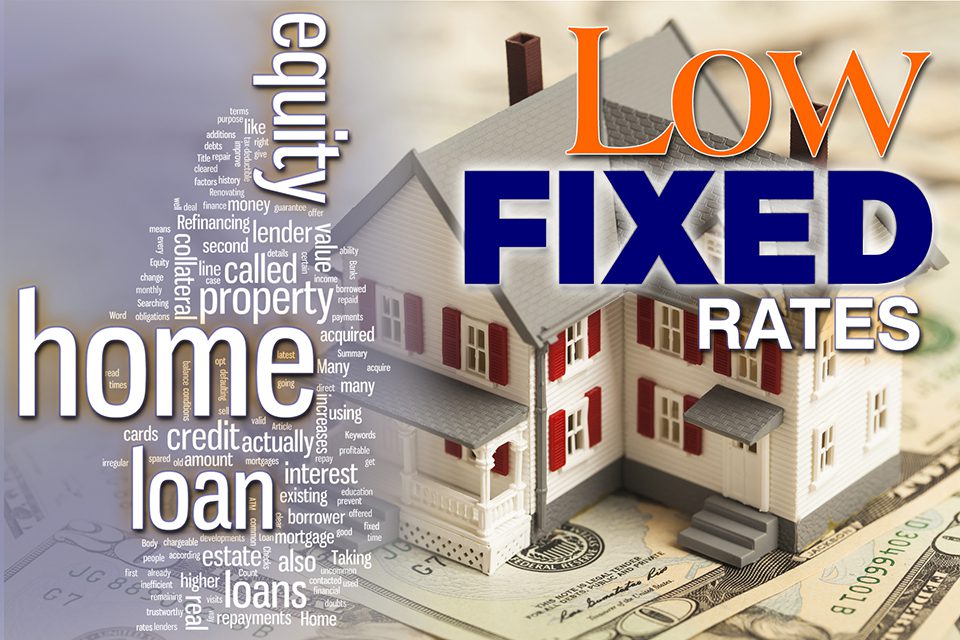Genuine Examples Using Equity Release Mortgages
Genuine Examples Using Equity Release Mortgages
Blog Article
Discovering the Different Kinds Of Equity Release Mortgages Available Today
Equity Release home loans present numerous options for house owners aged 55 and over. equity release mortgages. These monetary items deal with various requirements and preferences, enabling people to access funds from their property. From life time home loans to shared appreciation home loans, each type provides distinct benefits. Understanding these alternatives is vital for making informed decisions. What elements should one think about when selecting one of the most appropriate equity Release strategy? The information that adhere to might clarify this crucial topic
Understanding Equity Release Mortgages
Equity Release home loans offer home owners, typically those aged 55 and over, with a way to access the worth bound in their residential or commercial property without needing to sell it. This economic option enables individuals to convert a portion of their home equity right into money, which can be made use of for various functions, such as home improvements, repaying financial debts, or financing retirement.Equity Release can take different forms, however it basically involves loaning against the value of the home while retaining possession. Property owners can pick to get a swelling sum or a collection of smaller repayments, relying on their monetary requirements and preferences.Additionally, the quantity available for Release is influenced by the property's value, the property owner's age, and certain lending institution criteria. Generally, recognizing equity Release home loans is necessary for property owners to make educated decisions regarding taking advantage of their home's equity while considering the long-lasting ramifications.
Life time Mortgages
Lifetime mortgages stand for among one of the most popular kinds of equity Release. This monetary item permits home owners, generally aged 55 or older, to obtain against the value of their building while retaining possession. The car loan, which is protected against the home, accumulates passion in time yet does not need monthly payments. Rather, the car loan and accrued rate of interest are paid back when the home owner passes away or moves into long-term care.Lifetime mortgages provide adaptability, as customers can pick to get a lump sum or opt for a drawdown center, accessing funds as required. Notably, several strategies come with a no-negative-equity guarantee, guaranteeing that borrowers will certainly never owe even more than the value of their home. This function supplies comfort, allowing people to appreciate their retired life without the anxiety of diminishing their estate. Generally, life time home mortgages work as a practical option for those looking for financial backing in later life.
Home Reversion Plans

Drawdown Life Time Mortgages
While lots of homeowners seek ways to access their riches, drawdown lifetime home loans provide a flexible choice that allows individuals to Release funds progressively. This kind of equity Release home mortgage enables home owners to obtain versus the worth of their residential or commercial property while preserving ownership. Unlike typical life time mortgages, drawdown strategies enable borrowers to access a portion of their equity upfront and withdraw additional funds as needed, up to a fixed limit.This attribute can be especially advantageous for those who wish to handle their financial resources meticulously, as it decreases rate of interest buildup by only billing passion on the quantities attracted. Additionally, drawdown lifetime home mortgages commonly come with a "no unfavorable equity assurance," ensuring that debtors will never owe even more than their home's worth. This option matches senior citizens who prefer monetary safety and security and flexibility, enabling them to satisfy unanticipated expenditures or maintain their way of life without needing to offer their home.
Improved Lifetime Mortgages
Enhanced Life time Home loans offer unique advantages for eligible property owners looking for to Release equity from their properties. Understanding the eligibility requirements is vital, as it determines who can take advantage of these specialized fundings. Nevertheless, it is likewise crucial to examine the potential downsides connected with improved alternatives, guaranteeing an all-around point of view on their use.
Qualification Requirements Discussed
Recognizing the eligibility requirements for Improved Life time Mortgages is vital for prospective candidates looking for to access the equity in their homes. Usually, applicants need to be aged 55 or older, as this age requirement is typical in the equity Release market. Homeowners ought to possess a residential or commercial property valued at a minimal threshold, which can vary by lender. Significantly, the property has to be their primary home and in excellent problem. Lenders usually analyze the homeowner's wellness condition, as particular health and wellness conditions may enhance eligibility and advantages. In addition, candidates ought to not have existing significant financial obligations protected versus the home. Meeting these standards permits people to discover Improved Life time Home mortgages as a viable alternative for accessing funds locked up in their homes.
Benefits of Boosted Home Loans
After making clear the qualification standards, it ends up being obvious that Boosted Life time Home loans supply several significant benefits for house owners wanting to utilize their residential or commercial property equity. Primarily, they offer access to a larger car loan quantity compared to typical life time home mortgages, benefiting those with wellness conditions or age-related elements that enhance their life span threat. This enhanced loaning capability allows home owners to satisfy different financial needs, such as home renovations or retirement costs. In addition, these home mortgages normally feature adaptable repayment options, enabling customers to manage their finances better. The no-negative-equity assurance better guarantees that homeowners will never owe greater than their building's worth, giving tranquility of mind. Overall, Improved Life time Home mortgages provide an engaging alternative for eligible house owners looking for financial solutions.
Possible Disadvantages Considered
While Enhanced Life time Mortgages use numerous benefits, possible downsides call for careful factor to consider. One substantial concern is the effect on inheritance; the equity released lowers the value of the estate left to recipients. In addition, these home loans can accumulate substantial rate of interest gradually, leading to a significant financial debt that might go beyond the initial lending amount. There might also be useful site limitations on property modifications or rental, limiting property owners' versatility. Moreover, improved items commonly need particular wellness problems, suggesting not all house owners will certainly like it certify. Finally, managing the charges and charges associated with these mortgages can be complex, potentially causing unanticipated prices. Therefore, individuals need to extensively examine their scenario and get in touch with economic consultants before continuing.
Shared Gratitude Home Mortgages
Shared Recognition Home mortgages represent an unique monetary arrangement that allows property owners to accessibility equity while sharing future residential or commercial property value raises with the lending institution. This technique uses potential benefits such as lowered month-to-month settlements, however it additionally includes disadvantages that should be very carefully considered. Understanding the eligibility demands is vital for those curious about this choice.
Concept Overview
Equity Release home mortgages, especially in the form of shared gratitude home mortgages, supply home owners a special economic option that enables them to access funds by leveraging the worth of their residential property. In this setup, a lender supplies a funding to the property owner, which is commonly repaid through a share of the building's future recognition in worth. This implies that when the home owner markets the residential or commercial property or dies, the loan provider gets a percentage of the raised value, instead of just the initial financing amount. Shared gratitude mortgages can be appealing for those seeking to supplement their earnings or money considerable expenses while keeping ownership of their home. The economic ramifications of shared gratitude must be thoroughly taken into consideration by prospective borrowers.
Drawbacks and benefits
Common recognition home loans can provide significant economic benefits, they additionally come with significant disadvantages that prospective debtors should think about. These home mortgages permit home owners to accessibility equity in their residential properties while sharing a section of any future admiration with the lender. This setup can be helpful during times of climbing residential or commercial property values, offering substantial funds without monthly payments. The major downside is the possible loss of equity; home owners might finish up with appreciably decreased inheritance for beneficiaries. Additionally, the intricacy of the terms can lead to misunderstandings regarding payment obligations and the percentage of gratitude owed. It is vital for customers to evaluate these aspects carefully before committing to a common gratitude home mortgage.

Qualification Demands
What standards must homeowners fulfill to certify for a common appreciation home mortgage? Mostly, candidates must be at least 55 years old, ensuring they are within the target demographic for equity Release products. In addition, the residential property must be their main house and normally valued over a specified minimum limit, often around ? 100,000. Lenders also evaluate the house owner's monetary scenarios, including earnings and superior financial debts, to identify they can manage the mortgage sensibly. Significantly, the residential or commercial property must remain in great problem and free from significant lawful encumbrances. Homeowners should likewise have a clear understanding of the terms, including exactly how admiration will certainly be shared with the loan provider upon sale or transfer of the residential or commercial property, as this impacts general returns.
Picking the Right Equity Release Alternative

Often Asked Inquiries
What Age Do I Need to Be for Equity Release?
The age requirement for equity Release usually begins at 55 for most strategies. Some providers may offer choices for those aged 60 and above, mirroring varying terms based on individual situations and lending institution policies.
Will Equity Release Impact My Inheritance?
Equity Release can impact inheritance, as the quantity obtained plus rate of interest reduces the estate's worth. Beneficiaries may obtain less than anticipated, depending on the residential property's appreciation and the overall financial debt at the time of passing.
Can I Move Residence With Equity Release?
The concern of moving house with equity Release arises frequently. Usually, people can move their equity Release strategy to a brand-new residential or commercial property, however particular terms and problems may use, requiring examination with the lending institution for assistance.
Are There Charges Connected With Equity Release Mortgages?
Fees related to equity Release home mortgages can include arrangement fees, appraisal fees, and lawful prices. In addition, there may be early repayment costs, which can influence the read more total price and financial effects for the debtor.
Just How Does Equity Release Influence My Tax Situation?
Equity Release can affect one's tax situation by possibly increasing taxable income, as released funds are considered funding. It typically does not sustain immediate tax liabilities, making it important to get in touch with an economic expert for tailored assistance.
Verdict
In recap, the range of equity Release home loans readily available today offers homeowners aged 55 and over multiple pathways to access their residential property's value - equity release mortgages. Whether choosing for a life time home loan, home reversion strategy, or other options, each option offers unique benefits customized to individual financial needs. Mindful factor to consider and assessment with a monetary expert are important to ensure the chosen equity Release option lines up with financial conditions and individual goals, ultimately assisting in notified decision-making for a secure economic future. Equity Release mortgages present various choices for house owners aged 55 and over. Equity Release home mortgages supply home owners, generally those aged 55 and over, with a way to access the value connected up in their property without needing to market it. Improved Life time Home mortgages supply unique benefits for qualified homeowners seeking to Release equity from their residential properties. Equity Release home loans, particularly in the kind of shared gratitude home mortgages, use property owners an one-of-a-kind financial solution that permits them to access funds by leveraging the worth of their building. In recap, the range of equity Release mortgages offered today supplies homeowners aged 55 and over several paths to access their residential property's worth
Report this page